Teaching darts scoring kids easy starts with simplification: focus on adding up the numbers they hit, initially ignoring doubles, trebles, and complex outs. This article will guide you through a step-by-step approach to introduce dart scoring to children, progressing from basic addition to the standard 501 game, and offering fun alternative scoring methods along the way.
⚠️ Still Using Pen & Paper (or a Chalkboard)?! ⚠️
Step into the future! The Dart Counter App handles all the scoring, suggests checkouts, and tracks your stats automatically. It's easier than you think!
Try the Smart Dart Counter App FREE!Ready for an upgrade? Click above!
Making Darts Accessible: Teaching Darts Scoring Kids Easy
Darts can be a fantastic game for children, improving their mental arithmetic, hand-eye coordination, and concentration. However, the traditional scoring system can seem daunting at first. The key is to break it down into manageable steps and make it fun! We’ll explore different methods to help kids grasp the concept of darts scoring without feeling overwhelmed. Before you begin, it’s important to have a safe environment for playing darts. Consider using a soft-tip dartboard and ensuring there’s plenty of space around the board.
Starting with simplified rules is crucial to keeping young players engaged. Rather than immediately jumping into the complexities of 501, focus on developing their basic arithmetic skills through the game.
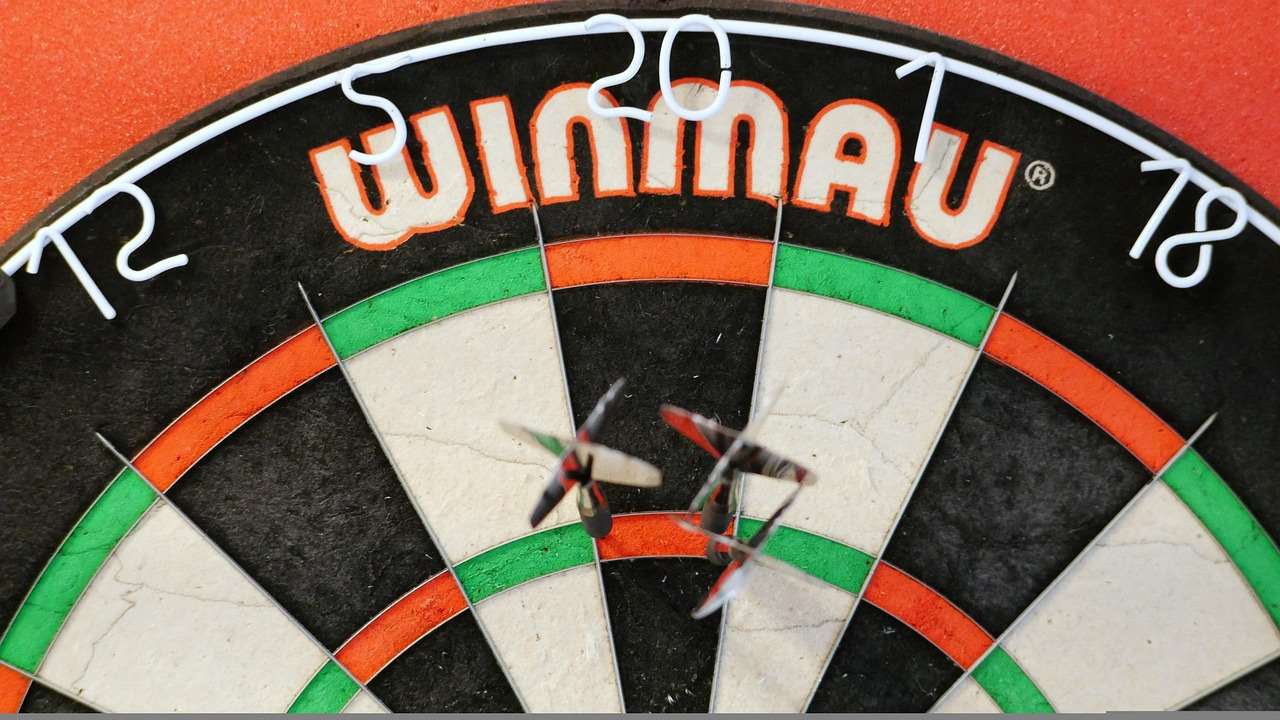
Step 1: Target Practice and Simple Addition
Begin by focusing purely on hitting the board. Forget about the scoring at first; just encourage them to aim for different numbers. Once they’re hitting the board with some consistency, introduce simple addition.
- Assign points: Each section on the board is worth its face value.
- Three darts per turn: Throw three darts and add up the total score.
- No doubles or trebles: Ignore the doubles and trebles segments for now. Focus solely on the single number value.
For example, if they hit a 5, a 10, and a 1, their score for that round is 5 + 10 + 1 = 16. Keep it simple and celebrate their progress!
Step 2: Introducing the Double Ring
Once they’re comfortable with basic addition, you can introduce the concept of the double ring. Explain that hitting a number in the outer ring doubles its value.
- Explain the concept: Show them the double ring and explain that hitting a number there counts as twice that number.
- Practice rounds: Have practice rounds where they try to hit specific doubles. For example, “Can you hit double 5?”.
- Incorporate into scoring: Now, include the double score in their total. If they hit a double 5, a 10, and a 1, their score becomes (5 x 2) + 10 + 1 = 21.
Remember to be patient and encourage them. It takes time to master the art of hitting doubles. This stage prepares them for understanding outshots in the 501 game.
Step 3: Introducing the Treble Ring and Bullseye
After they’ve grasped the double ring, it’s time to introduce the treble ring and the bullseye.
- Explain the treble ring: Explain that hitting a number in the inner ring (treble ring) triples its value.
- Explain the bullseye: Explain that the outer bullseye is worth 25 points and the inner bullseye (double bullseye) is worth 50 points.
- Practice rounds: Have practice rounds focusing on hitting trebles and the bullseye.
- Incorporate into scoring: Now, include trebles and the bullseye in their total score. If they hit a treble 5, a double 10, and a bullseye, their score becomes (5 x 3) + (10 x 2) + 50 = 85.
At this point, you can start to introduce the idea of strategy. For example, encourage them to aim for the treble 20, which is the highest possible score with a single dart. You can also explain that improving their dart throwing technique will make hitting these targets easier.
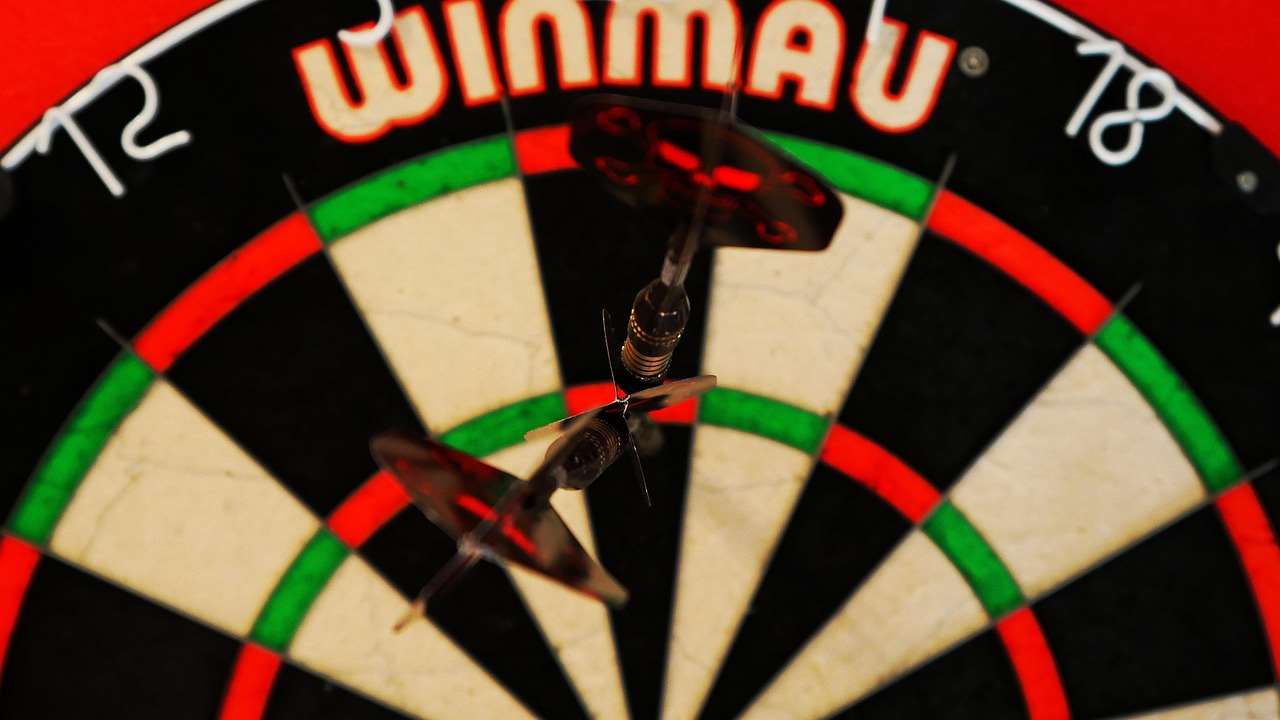
Moving Towards the 501 Game: A Gradual Approach
Once the children understand the value of each section of the board, you can gradually introduce the standard 501 game. But remember, keep it simple at first! Consider Adapting dart game rules for children.
Step 4: Simplified 501
Start with a simplified version of 501, focusing on subtraction and understanding the objective of the game.
- Starting score: Begin with a lower starting score, like 101 or 201, instead of 501. This makes the game shorter and less daunting.
- Scoring as normal: Score each turn as they’ve learned, adding up the value of their three darts.
- Subtract from the total: Subtract their score from their remaining total. Help them with the subtraction if needed.
- Winning the game: The goal is to reach exactly zero. For now, ignore the “double out” rule. Whoever gets to zero first wins.
This is a good stage to use a whiteboard or scoring app to help track the score. This allows the kids to focus on their throws and calculations, rather than worrying about keeping track of the score manually.
Step 5: Introducing the “Double Out” Rule
Once they’re comfortable with subtracting and reaching zero, you can introduce the “double out” rule.
- Explain the rule: To win, the last dart must land on a double.
- Practice “double out”: Dedicate some practice time to aiming for specific doubles to finish the game.
- Implement in the game: Now, enforce the “double out” rule in your simplified 501 game. If they reach zero without hitting a double on their last dart, their score reverts to what it was at the start of that turn.
This is often the most challenging part for beginners, so be patient and supportive. Emphasize that practice makes perfect and celebrate small victories, such as hitting a required double even if they don’t win the game.
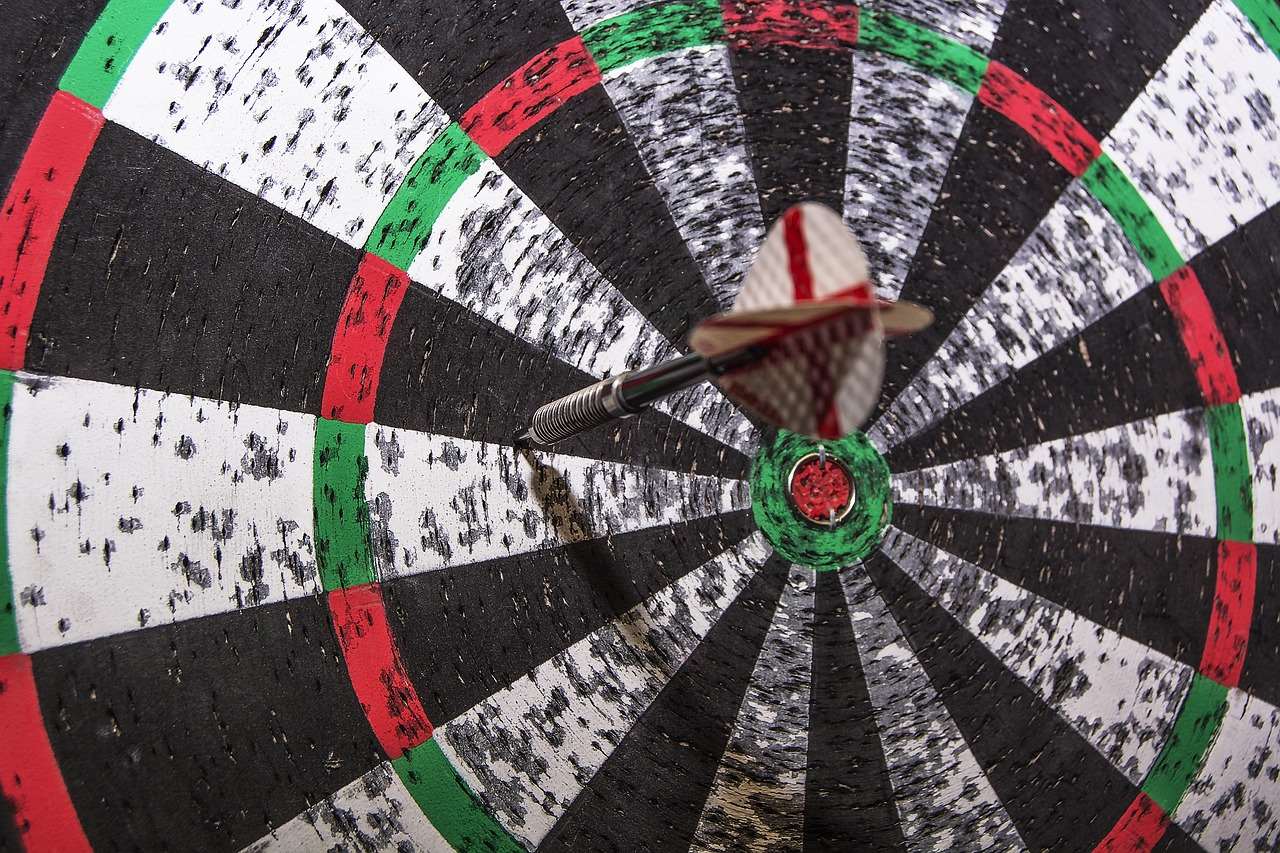
Step 6: Full 501 Game
Finally, when they’ve mastered the simplified version with the “double out” rule, you can move on to the full 501 game. You can find Simplified 501 game rules for novice players online if needed.
- Starting score: Start with 501 points.
- Scoring and subtracting: Score each turn as usual and subtract from their remaining total.
- “Double out” rule: The last dart must land on a double to win.
At this stage, they’re playing the game as it’s traditionally played. It’s important to foster a sense of sportsmanship and encourage fair play. The goal is to have fun and learn, even if they don’t win every game.
Alternative Scoring Methods for Younger Children
For younger children, or those who are struggling with the traditional scoring system, consider using alternative scoring methods. These methods are designed to be simpler and more engaging.
Around the Clock
In this game, the players take turns trying to hit each number on the dartboard in sequence, starting with 1 and ending with 20. The first player to hit all the numbers wins. Doubles and trebles count as the single number. This game helps with number recognition and targeting specific areas of the board.
- Easy to understand: Very simple rules, easy for even young children to grasp.
- Focus on accuracy: Encourages precise aiming at specific numbers.
- Adaptable: You can modify the game by only going up to number 10 or 15 for younger children.
Cricket
Cricket is a strategic game where players score points by hitting specific numbers (20, 19, 18, 17, 16, 15 and the bullseye) and “closing” them by hitting each number three times (or a combination of singles, doubles, and trebles). Once a number is closed, only the opposing player can score on it. The first player to close all the numbers and have the highest score wins.
- Strategic thinking: Introduces strategic elements of blocking opponents and targeting specific numbers.
- Number recognition: Reinforces recognition of specific numbers on the board.
- Team play: Can be played in teams, promoting collaboration and teamwork.
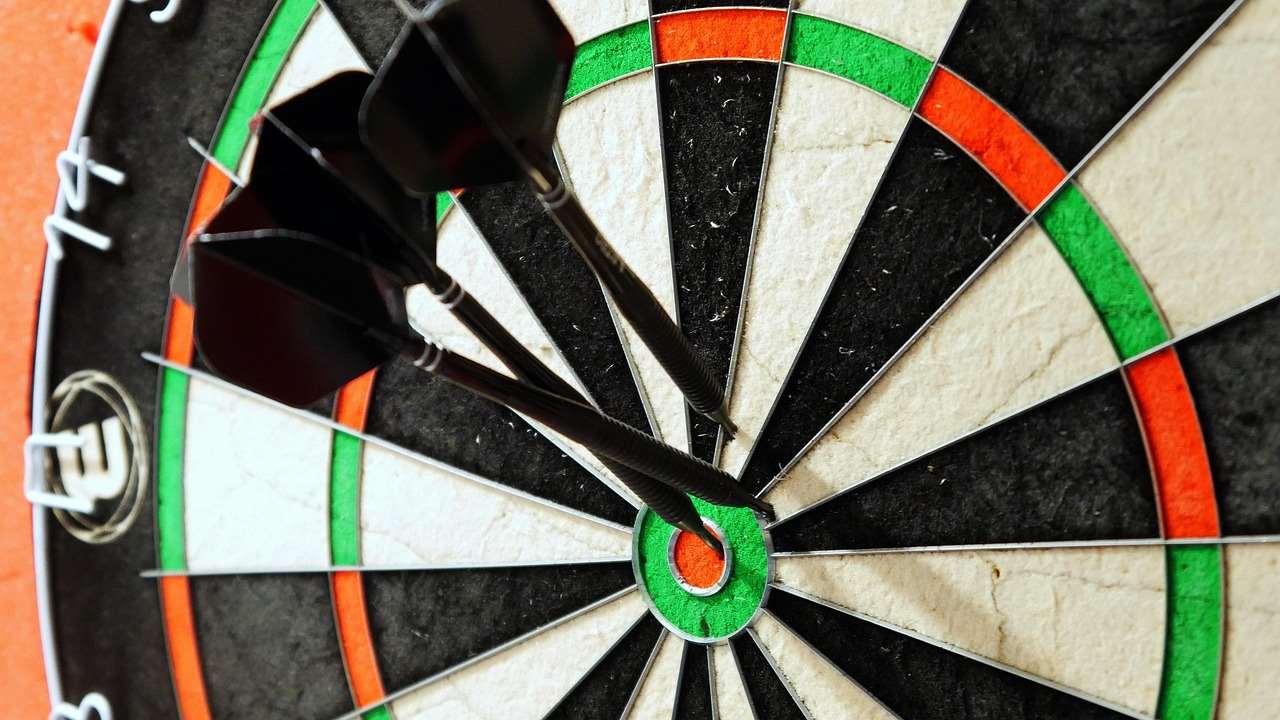
Halve It
In Halve It, players choose a set of numbers at the start of the game. Each player then tries to score on those numbers. If a player fails to hit one of their chosen numbers in a round, their score is halved. The player with the highest score at the end of the agreed number of rounds wins.
- Number selection: Encourages players to choose numbers strategically.
- Risk assessment: Introduces an element of risk, as missing a target can drastically reduce their score.
- Adaptable difficulty: You can adjust the number of rounds and the chosen numbers to suit the skill level of the players.
Tips for Keeping it Fun and Engaging
The most important thing is to make teaching darts scoring kids easy and enjoyable. Here are some tips to keep them engaged:
- Keep it positive: Focus on encouragement and praise, rather than criticism.
- Celebrate progress: Acknowledge and celebrate their improvements, no matter how small.
- Make it a game: Turn practice sessions into games with prizes or rewards.
- Take breaks: Don’t push them too hard. Take breaks when they start to lose focus.
- Involve them in setting goals: Let them set their own goals and track their progress.
Remember that children learn at different paces. Be patient and adapt your approach to suit their individual needs and abilities. Consider Basic Darts Fundamentals for Beginners to help them start with good technique.
Safety First: Emphasizing Safe Dart Play
Before even thinking about scoring, it’s paramount to instill safe darts play habits. Emphasize these rules consistently:
- No running while darts are being thrown: This prevents accidents and injuries.
- Stand behind the throw line: Ensures adequate distance for safe throws.
- Only one person throwing at a time: Prevents collisions and accidental dart throws.
- Never throw darts at people or animals: Reinforce the importance of darts as a game, not a weapon.
- Store darts safely when not in use: Keep darts out of reach of very young children and pets.
Creating a safe environment is just as important as learning the rules of the game. Model safe behavior yourself and consistently reinforce these guidelines.
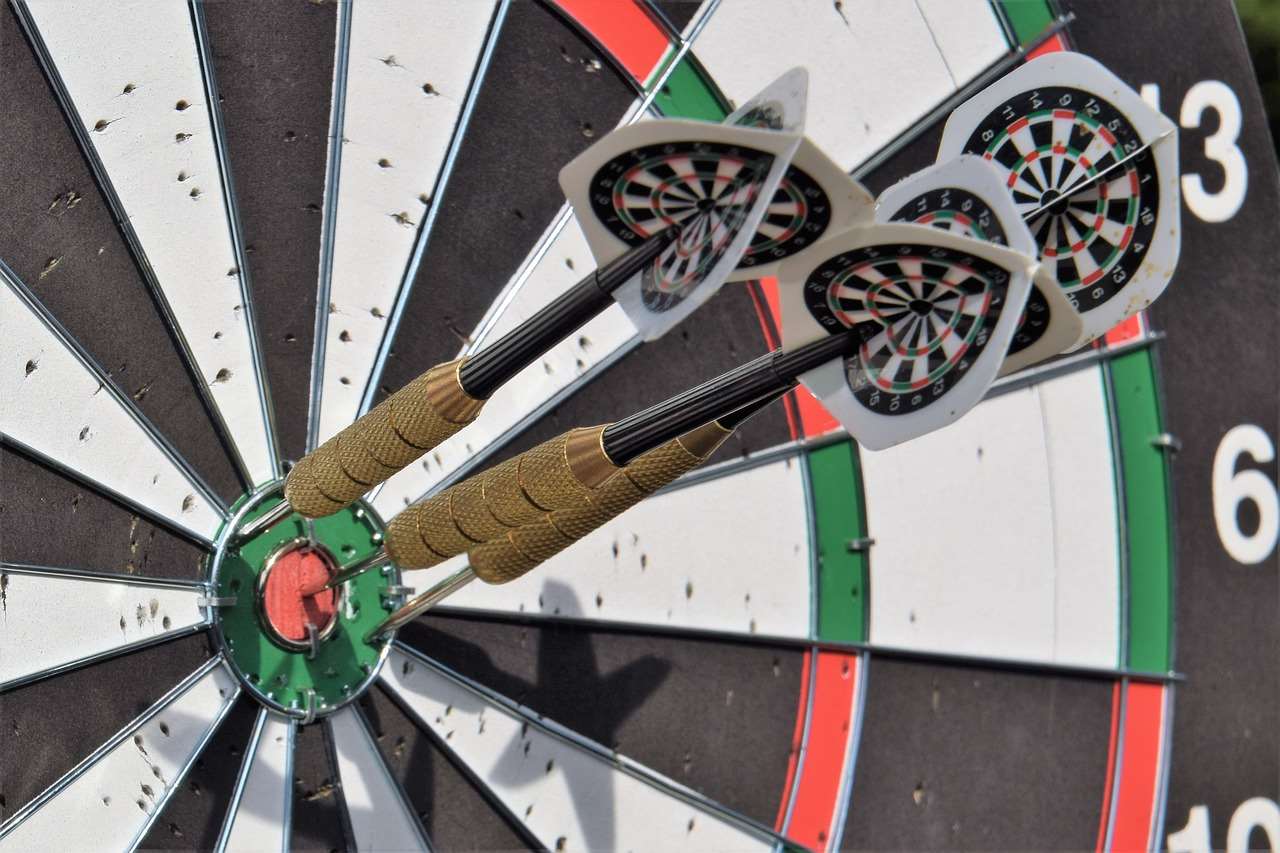
Resources for Learning More
There are many resources available online and in libraries to help you learn more about darts and darts scoring. Look for books, websites, and videos that provide clear and concise explanations of the rules and techniques.
- Darts websites: Many websites offer tutorials, tips, and information about darts.
- YouTube channels: Several YouTube channels offer instructional videos on darts techniques and scoring.
- Dart leagues and clubs: Consider joining a local dart league or club for more formal instruction and competition.
By exploring these resources, you can expand your knowledge and improve your skills as a darts player or coach.
Conclusion
Teaching darts scoring kids easy is about breaking down complex concepts into manageable steps, making it fun, and emphasizing safe play. By starting with simple addition, gradually introducing doubles, trebles, and the bullseye, and using alternative scoring methods, you can help children develop their mathematical skills, hand-eye coordination, and strategic thinking. Remember to be patient, supportive, and focus on celebrating their progress. Now that you have the tools, get out there and have some fun teaching the next generation of dart players! What are you waiting for? Gather the family, set up the dartboard, and start teaching darts today. Consider exploring Fun dart game variations with modified rules to keep them interested!
Hi, I’m Dieter, and I created Dartcounter (Dartcounterapp.com). My motivation wasn’t being a darts expert – quite the opposite! When I first started playing, I loved the game but found keeping accurate scores and tracking stats difficult and distracting.
I figured I couldn’t be the only one struggling with this. So, I decided to build a solution: an easy-to-use application that everyone, no matter their experience level, could use to manage scoring effortlessly.
My goal for Dartcounter was simple: let the app handle the numbers – the scoring, the averages, the stats, even checkout suggestions – so players could focus purely on their throw and enjoying the game. It began as a way to solve my own beginner’s problem, and I’m thrilled it has grown into a helpful tool for the wider darts community.